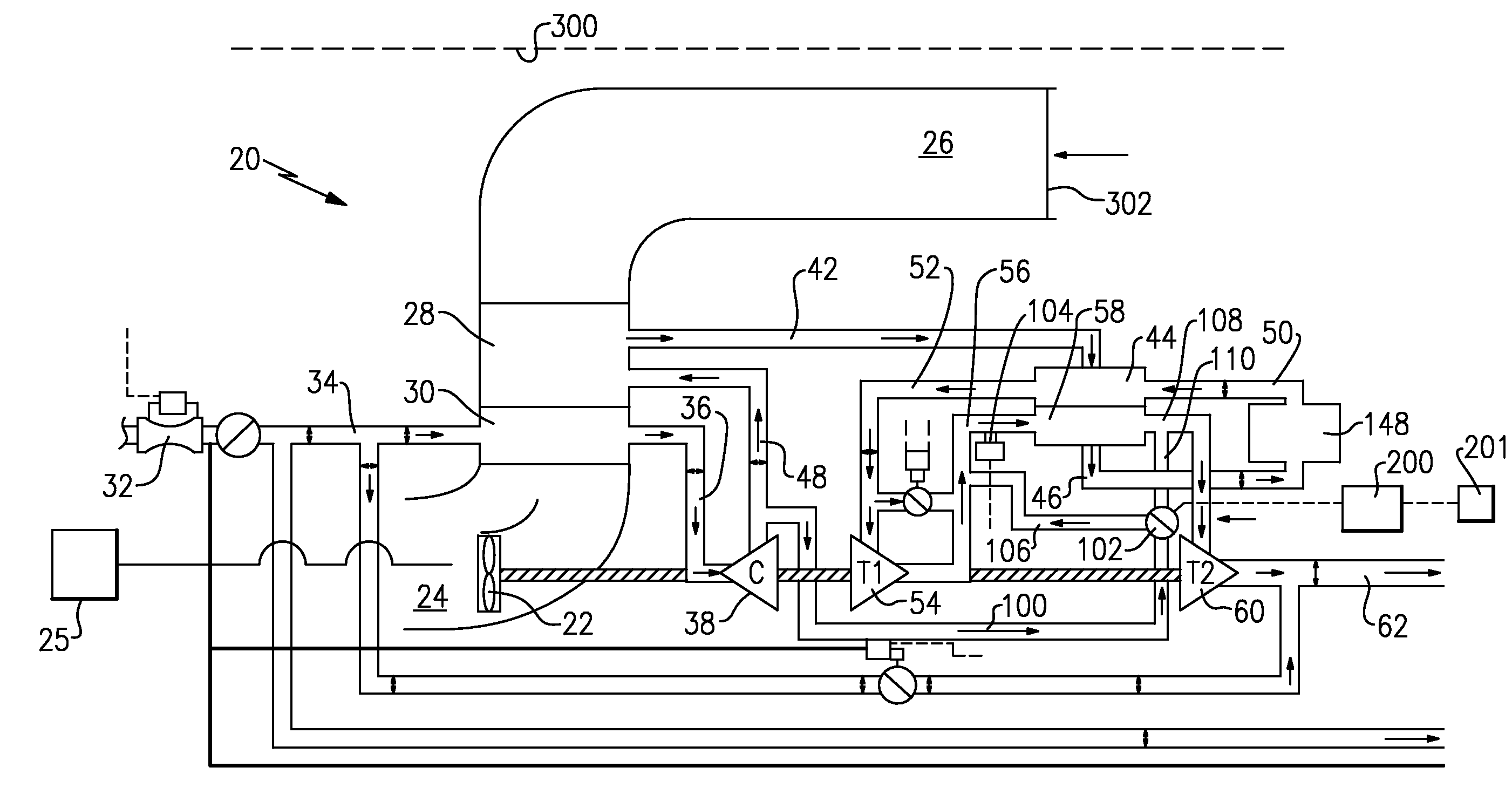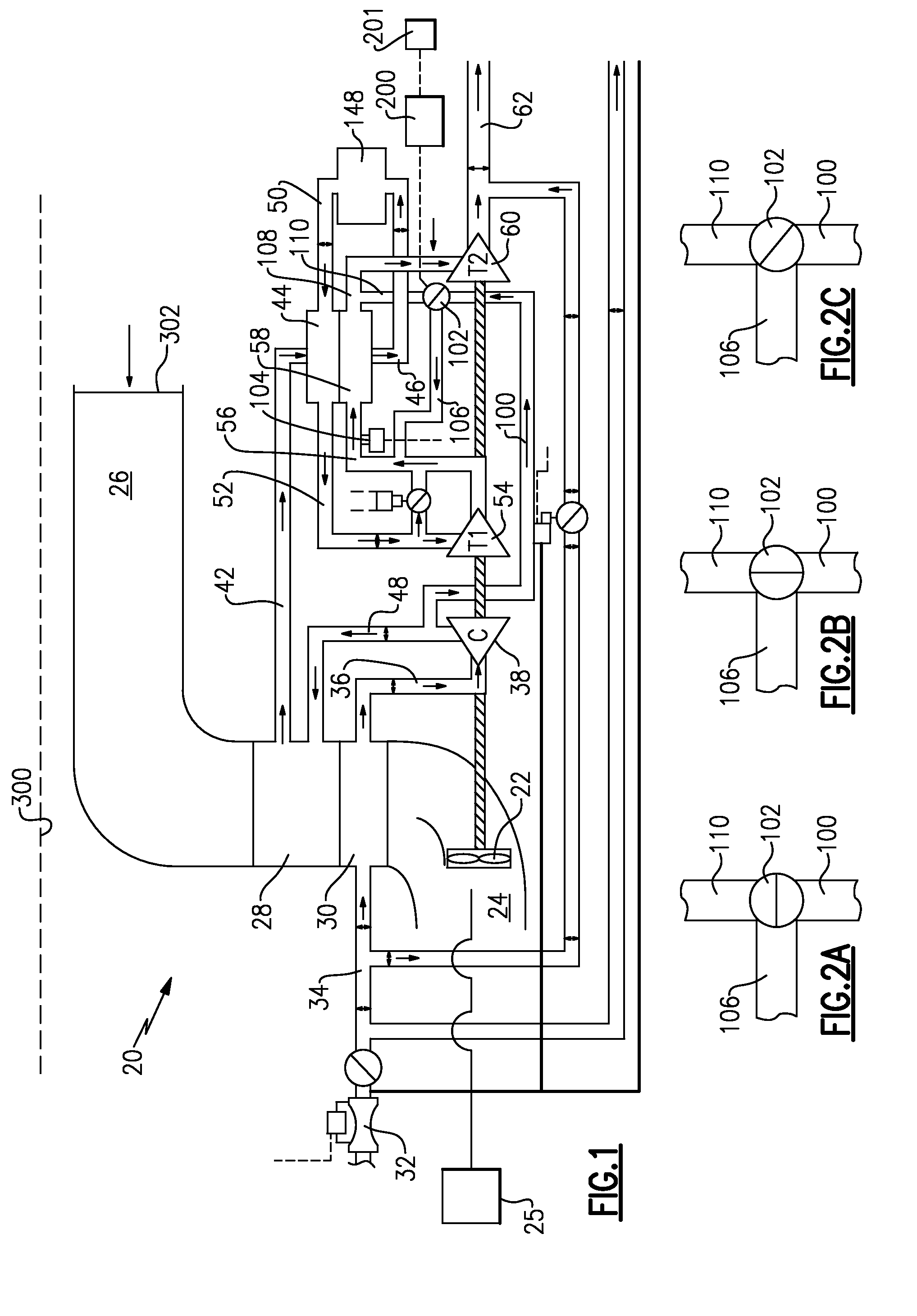Condenser Ice Removal for Environmental Control System
a technology of environmental control system and condenser, which is applied in the direction of ventilation system, lighting and heating apparatus, heating types, etc., can solve the problems of reducing the air flow of aircraft, raising challenges, and causing ice to become a particular problem
- Summary
- Abstract
- Description
- Claims
- Application Information
AI Technical Summary
Benefits of technology
Problems solved by technology
Method used
Image
Examples
Embodiment Construction
[0012]An environmental control system 20 is illustrated in FIG. 1. A bleed air source enters the environmental control system 20 by an inlet duct 32 and continues to flow to ducting 34. Since the bleed air is hot, the inlet air is cooled at a primary heat exchanger 30, and a secondary heat exchanger 28. The cooling source is the ambient air that is pulled by a fan 22 from a ram inlet duct 26 to an outlet 24. The ram inlet duct 26 communicates with an opening 302 which is on an outer surface of an aircraft 300, shown schematically. Notably, the air in the ram inlet duct 26 does not mix with the interior of the heat exchangers 28 or 30, but rather passes across them such that the bleed air 32 is cooled.
[0013]After the bleed air passes the primary heat exchanger 30 the air passes into a flow line 36, and to a compressor 38. Downstream of a compressor 38 the air passes into a line 48 leading into a secondary heat exchanger 28. Secondary heat exchanger 28 further cools the air. The air d...
PUM
 Login to View More
Login to View More Abstract
Description
Claims
Application Information
 Login to View More
Login to View More - R&D
- Intellectual Property
- Life Sciences
- Materials
- Tech Scout
- Unparalleled Data Quality
- Higher Quality Content
- 60% Fewer Hallucinations
Browse by: Latest US Patents, China's latest patents, Technical Efficacy Thesaurus, Application Domain, Technology Topic, Popular Technical Reports.
© 2025 PatSnap. All rights reserved.Legal|Privacy policy|Modern Slavery Act Transparency Statement|Sitemap|About US| Contact US: help@patsnap.com


